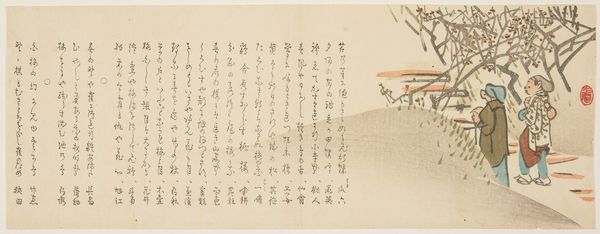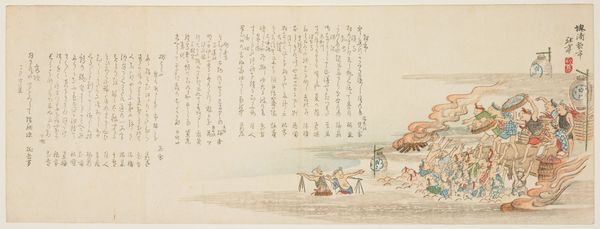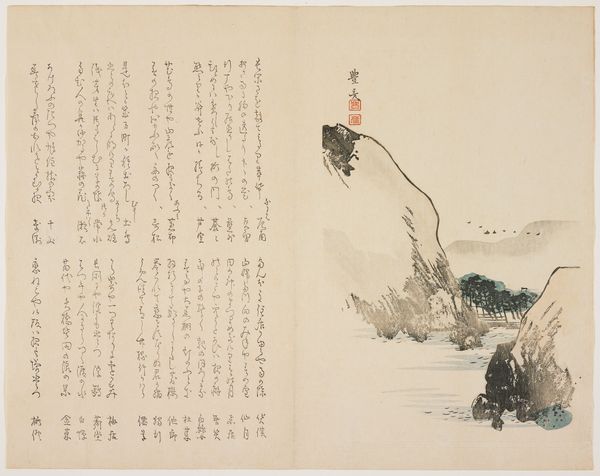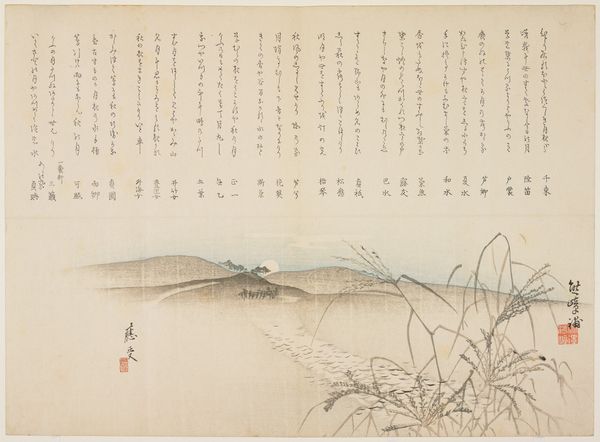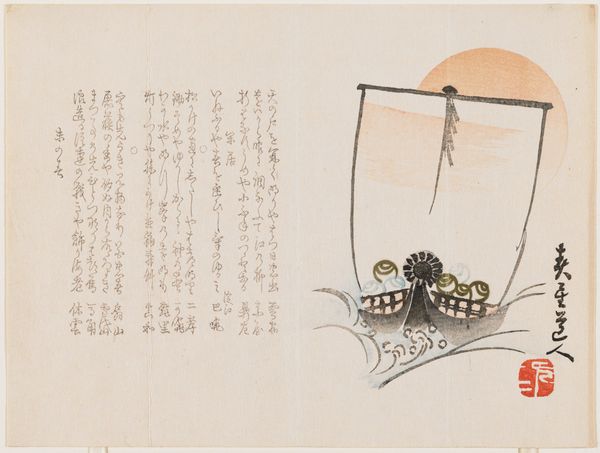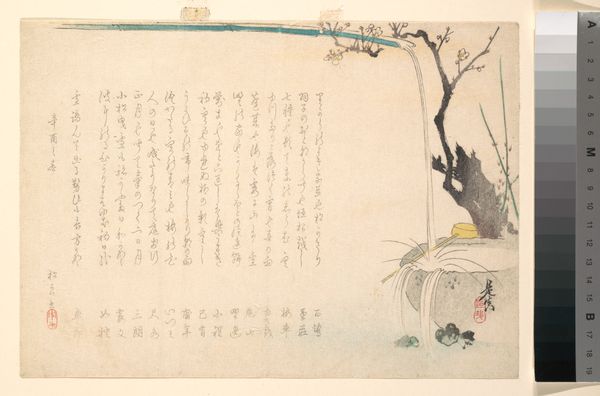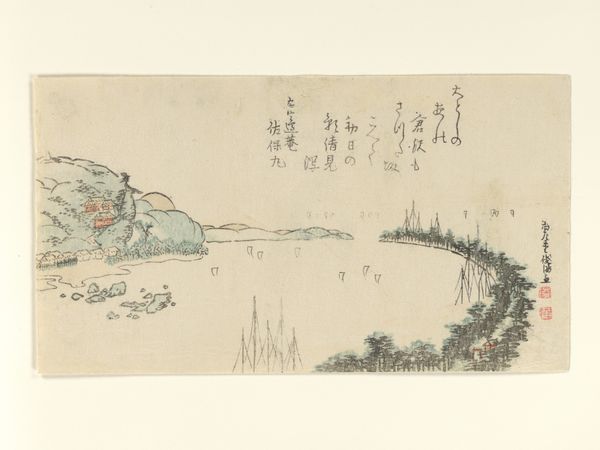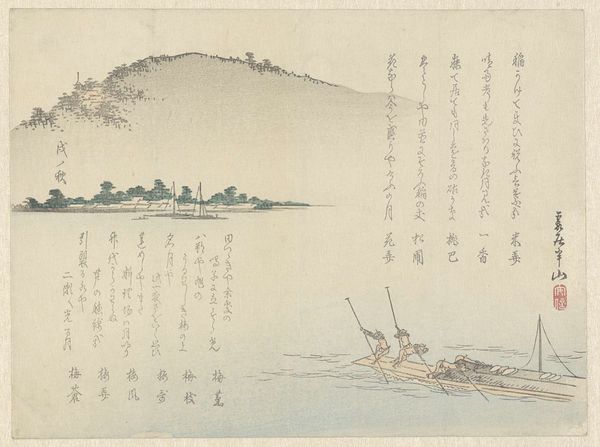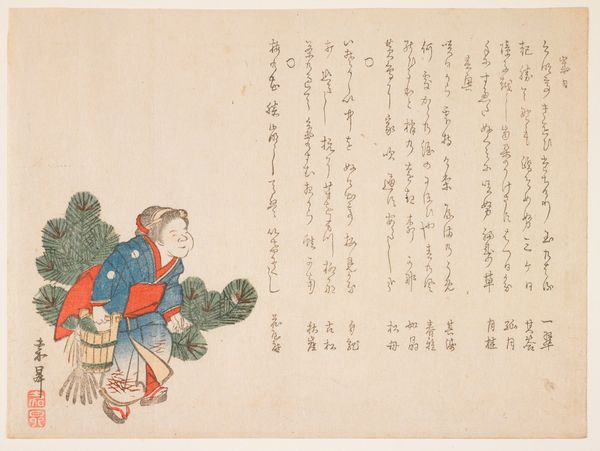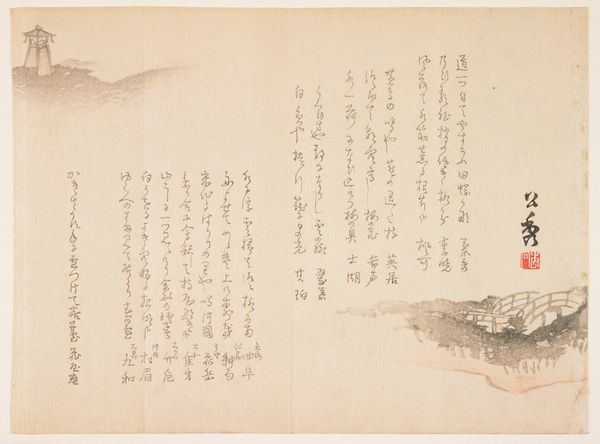
print, paper, ink, woodblock-print
#
narrative-art
# print
#
landscape
#
ukiyo-e
#
paper
#
ink
#
woodblock-print
#
orientalism
Dimensions: 7 1/8 x 9 3/4 in. (18.1 x 24.8 cm) (image, sheet)14 x 17 15/16 in. (35.5 x 45.5 cm) (mat)
Copyright: Public Domain
Curator: Today we are looking at "Tidings of Spring on the Sumida River," a woodblock print by Yabu Chōsai, dating back to about 1863. It's currently part of the collection at the Minneapolis Institute of Art. Editor: It has a certain lightness of being, doesn't it? The colour palette is subdued and delicate. There is so much implied space in this flat work. The scene is charming. Curator: As a woodblock print, it's fascinating to consider the labor involved. The process of carving the woodblocks, layering the colors, and producing multiple copies speaks to a specific mode of artistic production rooted in artisanal craft, and aimed toward widespread consumption. Ukiyo-e prints democratized art by making it accessible to the masses. Editor: Absolutely, but let's focus for a moment on the composition. The careful arrangement of the boat, figures, and landscape elements guides our eye smoothly across the pictorial space. The water fills most of the image, emphasizing tranquility. Curator: Right, and that choice of subject matter wasn't random. During the Edo period, the Sumida River became a central location for entertainment, leisure, and commerce. The act of viewing such a landscape print within the context of early capitalist consumption shifts its reading; its purpose wasn’t solely about art, but about creating desires, shaping perceptions and capturing glimpses of the every day. Editor: Consider the contrast in textures between the blossoms in the distance and the relative flatness of the water. These elements bring tension and compositional depth. I’d like to note, also, the function of line; its role here is key to establishing contours, delineating forms and activating the overall visual narrative. Curator: I appreciate the connection you make between the technical craft and the narrative possibilities. I tend to dwell on how materials and labor inform artistic content. Ukiyo-e production played an active part in society. The system allowed for collaboration amongst artists, publishers and artisans; a process wherein many voices were interwoven during an age undergoing a new system of production and artistic labor. Editor: Thinking about its visual language, I can certainly appreciate that too. Thank you for bringing these material aspects into view!
Comments
No comments
Be the first to comment and join the conversation on the ultimate creative platform.
